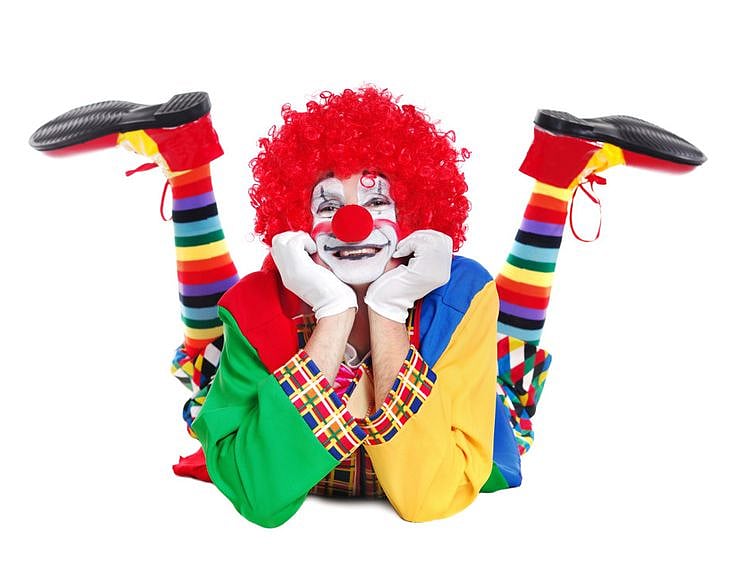Healing through laughter
Medical clowning may not reduce pain, but it certainly helps reduce anxiety

As children we looked forward to circuses coming to town and the antics of the clowns never failed to entertain us. The animals and the acrobats were the show-stoppers of course but it was the men in the colourful costumes and exaggerated mouths and noses that provided moments of hilarity and cheer. The circus phenomenon is, sadly, waning with organisations such as Peta (People for the Ethical Treatment of Animals) coming down heavily on the inhumane conditions in which these animals live and perform. However, clowns have escaped censure as all they do is try and make people laugh.
But now clowning has become serious business, with hospitals using the services of clowns for therapy, especially in paedriatic wards. In the West, medical clowns are a common feature in health centres and homes for the elderly. Medi-clowning is gaining ground, even in India. A one-of-its-kind 600-hour course to train and groom a line of therapeutic clowns has been launched and a founder of MeDiClown Academy says this is much more than just being a joker. A teacher in New Delhi has quit her job to be a full-time medical clown.
It’s not just about providing laughter with over-the-top antics. Medical clowns have sat through the last minutes of terminally ill children to ease their pain.
Clown therapy is different from a clown entering hospitals to cheer up patients. It is more like drama therapy and helps the sick discover their inner clowns and act them out in group settings. It is a treatment intervention by encouraging people to engage in childlike play and escape from the harsh reality of their lives through the release offered by the characters they play.
The term ‘medical clowns’ may seem strange, but these performers play a therapeutic role by helping the patient forget about his pain and suffering for a while. Medical clowning may not reduce pain but it certainly helps reduce anxiety. Laughter truly is the best medicine. We observe this in everyday life when an adult transforms a child’s tears into laughter by making a funny face or clowning around. Or when someone is sad, an attempt may be made to bring a smile to the face of the dejected person by resorting to humour. Irritable moods can be vanquished by doing or saying something comical.
Medical clowning has also been put to good use in the treatment of people with drug dependency. Participating in the art of clowning has proved effective in improving the quality of life of people with disabilities, youth at risk and other marginalised groups.
Humour helps to ease anxiety and fear and also relieves stress. So, the services of clowns are also being used in high-stress corporate environments.
Therapeutic clowning is an arts-based practise designed to restore a sense of dignity and control and bring connectivity, lightness and joy in places where sadness, trauma and a sense of helplessness reside. In the case of children, these clowns help to normalise the hospital experience by providing distraction from medical issues and concerns, and allowing them an opportunity to laugh and play. Or they can help give sick children a sense of empowerment by giving them the chance to be the teacher who can explain things to the clueless clown. Play and laughter are essential parts of physical, cognitive, social and emotional development and interacting with clowns helps children realise their development potential.
In the Gaza Strip, clowns have been used to heal children with post-war trauma. Therapeutic clowns have also been flown to places that have witnessed unimaginable disasters, to work with people feeling scared, vulnerable or in pain.
In the words of Groucho Marx, “Clowns work as well as Aspirin, but twice as fast.”
— Vanaja Rao is a freelance writer based in Hyderabad, India.
Sign up for the Daily Briefing
Get the latest news and updates straight to your inbox
Network Links
GN StoreDownload our app
© Al Nisr Publishing LLC 2025. All rights reserved.